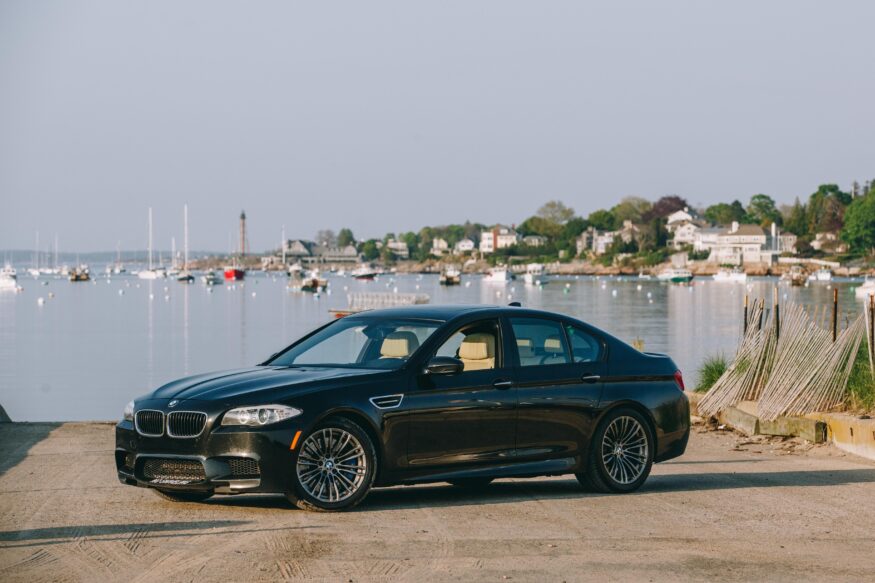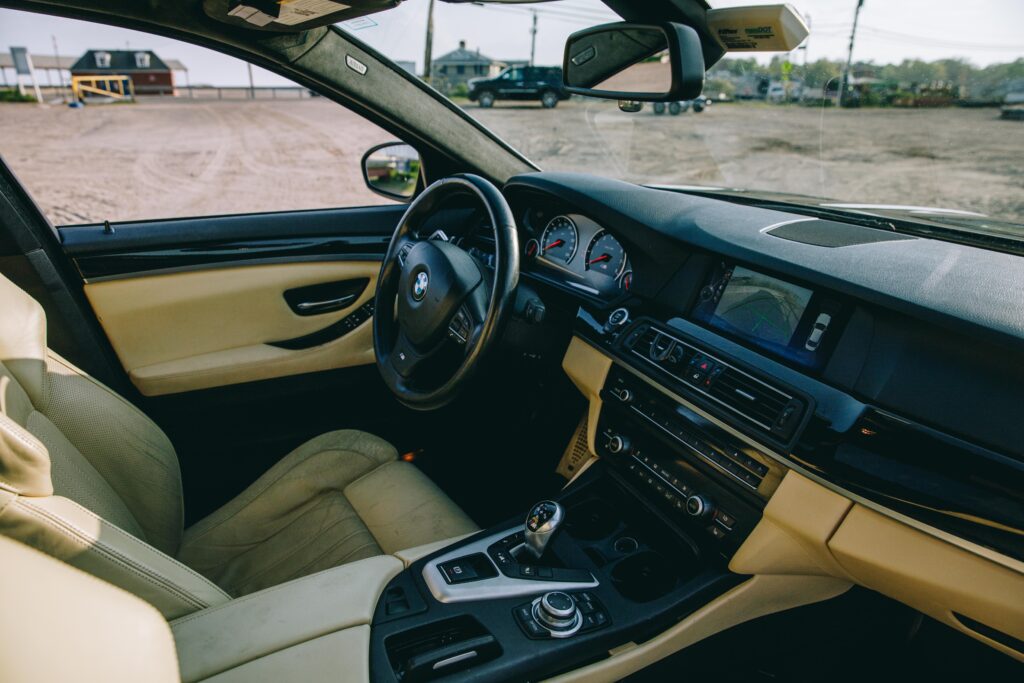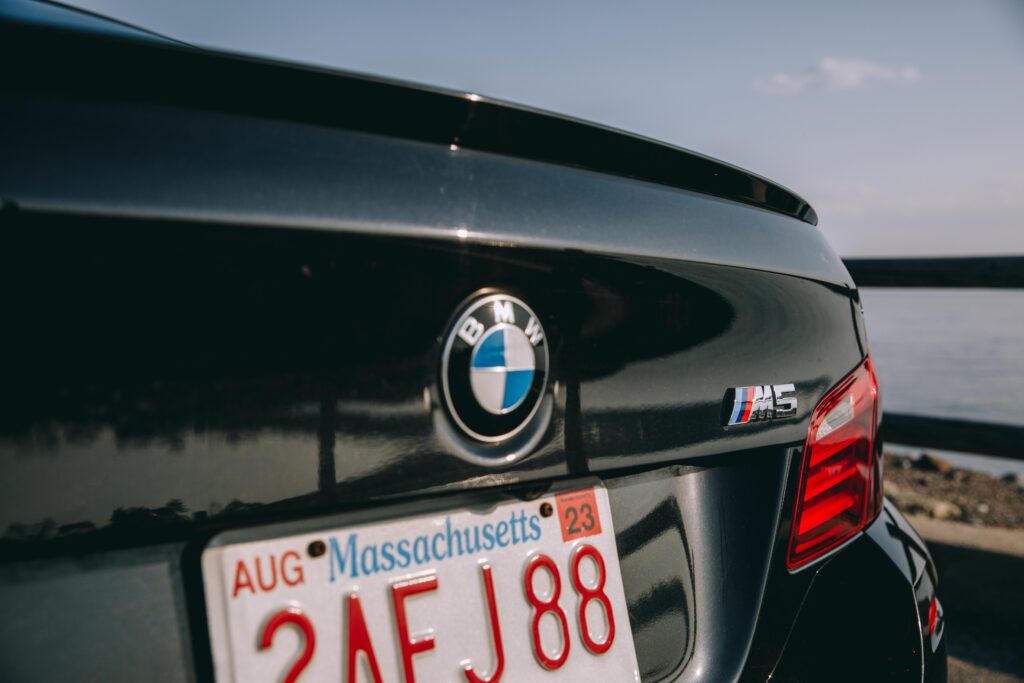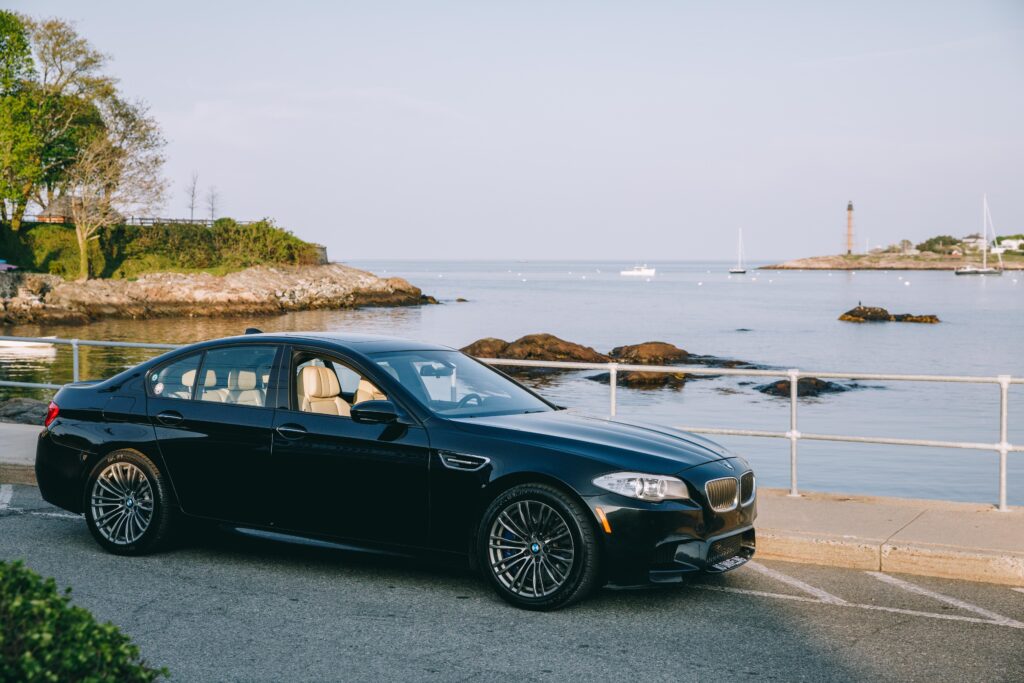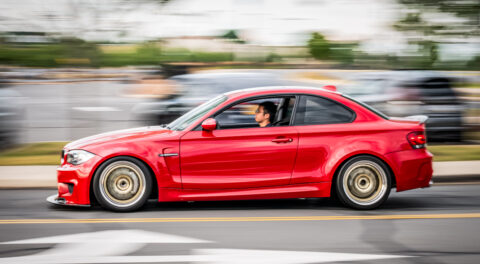The majority of my BMW background are pre-2013 models. I’ve owned an E46 Touring and have spent plenty of time with 1980s 3 Series (E30s), mid-2000s 3 Series (E90s), and “old guard” BMWs. When the opportunity to get behind the wheel of something on the more modern end presented itself, I couldn’t say no.
As Doug DeMuro would say, “This is an F10 M5.”
The F10 M5 ran from 2011 to 2016 and was the first turbocharged M5. The F10’s 4.4-liter twin-turbocharged V8 replaced the outgoing E60 M5’s V10 and produced 553 horsepower and 502 pound feet in stock form. With an M Driver’s Package it would get to 60 mph in 4.4 seconds and hit a top speed of 190 mph. Yowza!
Walking up to this 2013 M5 (Black Sapphire Metallic over Champagne leather), the design is restrained and not flashy compared to others of its lineage. It’s simply a 5 Series to whoever is on the street. Look a bit closer and its subtle design departs from your standard 530i, and that makes this generation M5 special. The design of this car is just to my liking—sleeper status. Outside of the exhaust setup, front-quarter-panel inserts, and badge, the F10 retains just the right amount of inspiration for the trim levels below. Unless you know, you’d never guess what this car is really capable of.
Speaking of its capabilities, this isn’t a standard F10 M5, it actually has quite the history. During its first 10,000 miles, this car had catastrophic rod-bearing failure, destroying its original S63. The owner, Henry Sanders of Microsoft fame, had a new “built” engine installed and added a Noelle Performance tune. As it sits this M5 makes roughly 750 horsepower. Have I already said “Yowza?!” Yes, this is a serious piece of kit.
Pulling away from a stop it’s immediately evident what you’re in. The exhaust is classic BMW and just how we like our porridge—not too hot, not too cold, but just right. You’re abundantly aware that it’s not a standard 5 Series, without drawing much attention at all. And I think that rings true for the around-town experience. I got more attention driving Nick’s E30 than in this car. However, when you cruise by people who know, the look on their faces is pretty priceless.
I love a gearbox—manuals to be specific—so I was skeptical of the F10 M5’s first-generation M-DCT transmission. While at low speeds, the transmission control unit (TCU) felt like it was hunting for what it wanted, but I felt like the DCT suited the car well. The powertrain felt cohesive. It’s a strong package for what drivers are looking for from the car, especially with all of its added power. I’d have to spend time with a manual-transmission-equipped F10 M5 to know for sure, but I really enjoyed the ease of use and surprisingly quick shifts through the paddles.
Through my time with the M5, I think what I found most interesting about this car are its different personalities. Using buttons around the shift lever, drivers can configure the steering, suspension, and throttle response to the desired mode. Starting in Comfort mode across the board, I found the F10 extremely compliant. Not dissimilar to other 5ers I’ve driven of the same vintage. You could very easily commute with this car. The transmission is buttery smooth (outside of the occasional low speed indecision). I found it easy, no more difficult or intimidating to drive than an X5.
Diving back into the adaptive buttons is where this car really comes to life. Having established its commute expertise, I move up into the Sport modes of each: steering, suspension, and throttle response. This made an impressive and immediate difference. What I was most surprised by was the suspension. While supple and easy in Comfort mode, the suspension, once turned up to Sport mode, stiffened up and those once mindless bumps were directly translated up into the chassis. By no means am I an adaptive suspension expert, but this was pretty impressive. Around the primitive tarmac of Massachusetts, you really feel every angulation on the driving surface—maybe not the best for the Boston commute. I also really enjoyed Sport Steering. In Comfort mode, the wheel felt mildly vague, but in Sport mode, the steering personality completely changed, feeling much more communicative and tight.
Finally, we move into Sport Plus—full-on M5 mode. This is what I expected from the car from the get go. A tight, firm, and an eager throttle. A proper M car. At this point the suspension and steering communicate exactly what the road surface is like, and in auto-mode the throttle and transmission hold gears lower and egg the driver on. With everything turned up to 11, the comfortable, commuter M5 was left completely behind and backroad beast stepped forward.
I also found that the F10 generation disguises its weight well. M5s are known for being big heavy German muscle cars, but in its M modes, the F10 felt fairly “tossable”—not necessarily a word I’d use for a car that is 4,300 pounds that makes over 750 horsepower. With that, I didn’t find the power figure scary, it actually felt usable through the midrange.
Having explored all of the different settings, I settled into Sport Plus Steering, Sport Throttle Response, and Comfort Suspension. Cumulatively, this created the perfect Bavarian cocktail. All of the steering feel, a more sporty throttle setup, and without being too much. With this setup, I quickly could see myself using this car everyday as a three-season daily driver.
Another thing I found impressive with the M5 was the sheer amount of power and torque available. Seemingly endless torque was at my disposal throughout the rev range, no doubt improved over a stock model by its unique powertrain. No matter the gear, the built twin-turbo V8 (S63) delivered nothing short of savage acceleration. This car would have no problem taking care of most highway contenders.
For the rest of my time with the M5, I slowly discovered where this car shines: long road trips. Its new owner uses this particular M5 for just that, fun highway and backroad road rallies. The F10 M5 is ideal for a grand tourer. There’s plenty of space for four tall people and room for bags in the boot. Based on its ethos, I am surprised I haven’t seen more Cannonball record attempts in these cars. It’s a sleeper with more than enough power, and it’s also poised and comfortable. This sounds like a match for the Merc and Audi past record holders!
My main takeaway coming from my time with the F10 M5 was its adaptability. It can be several completely different cars all at the same time. The fact it goes from commuter car to backroad weapon at the click of a couple of buttons was honestly cool. Is it a 7 Series on rough Massachusetts roads? No. Is it a M4 CSL on the track? Also no, but it does both of those things far better than I expected. It excels in big GT-style road trips and during a city commute not to mention its track capabilities. I thoroughly enjoyed my time with the M5 and developed a far better understanding of why people love these cars. It’s a true Swiss Army Knife of the automotive variety. If you’re not a chauffeur or Max Verstappen, the F10 M5 provides a unique platform to do it all, and do it all well. —Tucker Beaty

